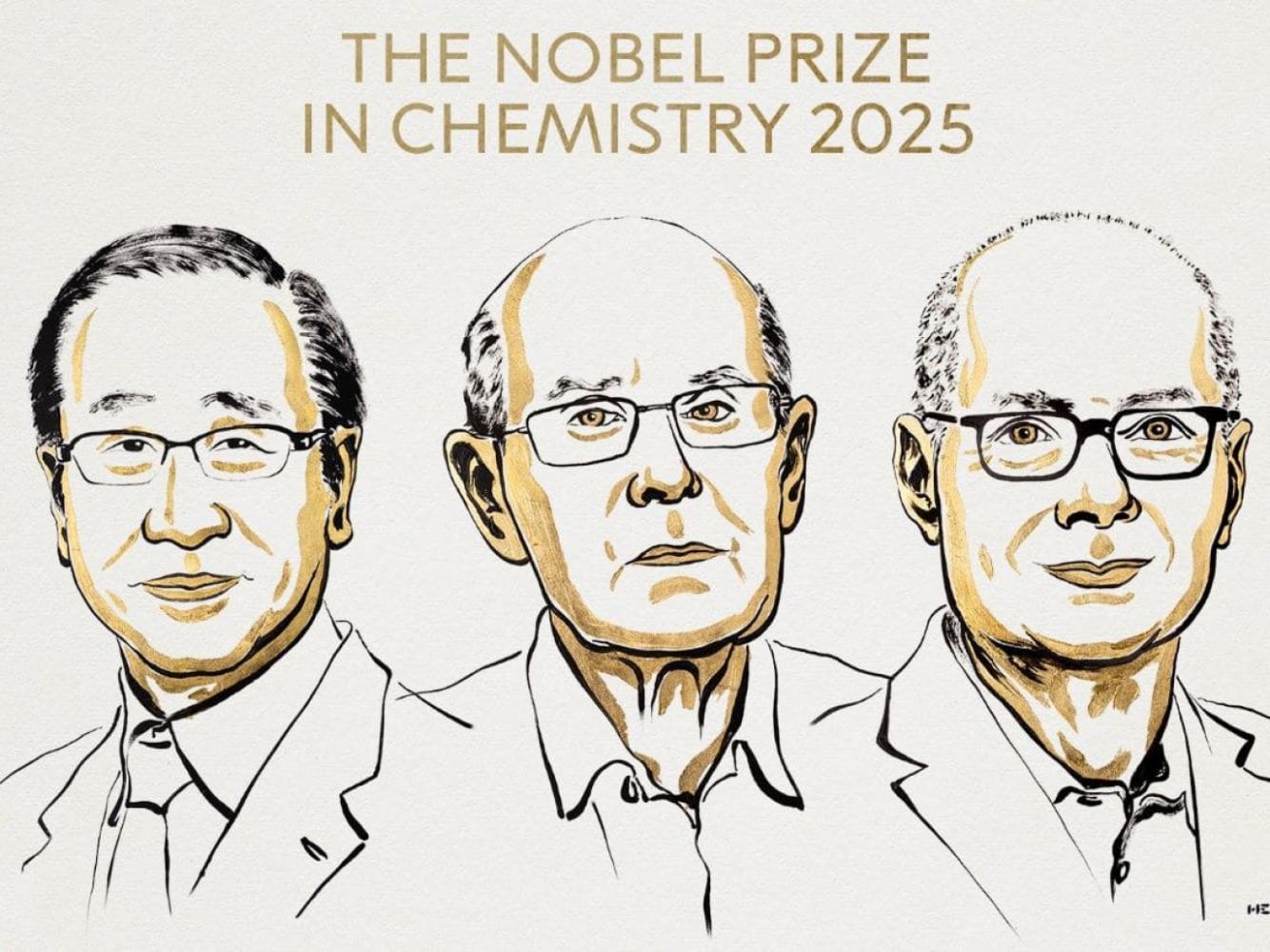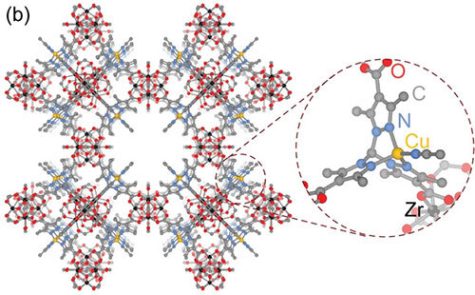
Megan Lander | Student Life Editor
October 18, 2025
Early this month on October 8th, the Nobel Prize in Chemistry was awarded to three intelligent and persevering scientists, Susumu Kitagawa, Richard Robson, and Omar M. Yaghi, for their work in developing metal-organic frameworks (MOFs). This is a revolutionary material they created utilized in trapping, storing, or filtering gasses at a molecular level. Announced all the way in Stockholm, Sweden, realizing a creation like this can reshape and impact many global challenges like renewing sources of clean energy, restoring climate stability, or making access to water more available. These scientists received an appropriate honor for changing the way molecular building materials are made using metal ions and organic molecules.
Yaghi’s story is one of the most inspiring aspects of this achievement since he is a product of the public school education system. Yaghi studies at University of California, Berkeley, which is a public school known for its innovation and further opportunities. His journeys are a prime example that curiosity, ambition, determination, work, support, and anyone, no matter their personal background, can make world changing discoveries. Senior Lucas Mudge said that “this just shows that you don’t need to come for money or grow up with a private education to make an impact on the world. It feels like such a small world that a Berkeley alumni won this internationally recognized award.”

Since this invention won a Nobel Prize, what exactly is a MOF? Metal-organic frameworks, or MOF, is a porous, sponge-like crystalline material made out of metal ions, like zinc and copper, with organic molecules to form a rigid pattern. These structures are measured on a nano scale, meaning the pores that soak up molecules can trap each individual molecule of gas. A fun fact about MOFs is that one gram of this material can equal the surface area of a football field!
MOFs are used for storing, separating, and as a catalyst for gas. They can capture gases like carbon dioxide from the air to combat climate change, store hydrogen for clean fuel in vehicles, or extract moisture out of desert air. MOFs can also safely hold toxic gases as well as more cleanly and efficiently speed up chemical reactions. The trio used advanced chemistry methods to tweak the way atoms connect with each other, making the materials strong, flexible, and customizable. The development process for this incredible and versatile innovation took decades of planning, research, and trial and error before reaching a desirable product.
The 2025 Nobel Prize in Chemistry is one of the greatest honors a scientist gets that some dedicate their entire lives to trying to attain it. While discovery and creating are beautiful things, this prize not only symbolizes growth, but it reflects the power of education and global collaboration. Kitagawa, from Japan, Robson, from the UK, and Yaghi, from Jordan, all have diverse backgrounds ethnically, culturally, and personally, but each came together as one to develop a great scientific breakthrough that will revolutionize the world. Senior Keria McKeon thought that “it [was] nice to know that a discovery like this was made in a group and not an individual. It really does show that when minds unite, ideas ignite and come to life.” This is a great example that no matter where one comes from, anyone can contribute to a greater, more sustainable future for generations to come.

Leave a Reply